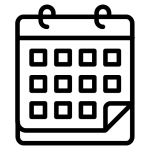SERVICES
- Allergy Screening
- Chemical Peels
- Dermapen
- Facial Skin Analysis
- FreshEyes
- Hyperhidrosis (Excessive Sweating)
- Hair Loss Treatment
- Laser Clinic
- Liquid Facelift
- Keloid Treatments
- Medical Facials
- Medical Treatments
- Mole Mapping
- Photodynamic Therapy (PDT)
- Skincare Advice
- Pigmentation Treatment
- Surgical Procedures
- Ultraviolet Phototherapy
USEFUL LINKS
 While many people think of botulinum toxin type A (known by the brand names Botox and Dysport) as a treatment for wrinkles, it has actually been used for many years to treat certain medical conditions. In fact, its use as a cosmetic treatment was only realised when people using it to treat facial muscle spasms noticed an improvement in their facial wrinkles.
While many people think of botulinum toxin type A (known by the brand names Botox and Dysport) as a treatment for wrinkles, it has actually been used for many years to treat certain medical conditions. In fact, its use as a cosmetic treatment was only realised when people using it to treat facial muscle spasms noticed an improvement in their facial wrinkles.
What is Botox?
Botox is one brand of a purified form of botulinum toxin type A, a chemical toxin that is produced by Clostridium botulinum bacteria. Although this is the same toxin that causes botulism — a type of infection that can result in life-threatening muscle paralysis — Botox is safe to use as an injectable medicine because it is used in such small quantities and injected directly into specific sites. Another brand of botulinum toxin type A, called Dysport, is also available.
How does Botox treatment work?
Botulinum toxin type A (Botox, Dysport) blocks the release of a neurotransmitter (a chemical messenger) known as acetylcholine from nerve cells. Acetylcholine normally transmits nerve impulses to muscle cells, causing them to contract. Without acetylcholine, the affected nerve is unable to send a signal to the muscle it supplies, resulting in a weakened or paralysed muscle. The effect of Botox injections is restricted to the area being treated, and because the nerve fibres usually regenerate after a couple of months, the effect is only temporary.
What are Botox injections used for?
Botox injections are used to treat medical conditions such as:
- blepharospasm (twitching or spasm of the eyelid);
- cervical dystonia, or spasmodic torticollis (a type of muscle spasm in the neck);
- facial or other localised muscle spasms;
- muscle spasticity due to cerebral palsy;
- strabismus (a condition where the eyes are not properly aligned); and
- certain cases of incontinence due to overactive bladder.
Botox injections can be directed into the skin to block the action of the nerves that control your sweat glands. It can be used in this way to treat excessive localised sweating (hyperhidrosis), especially severe underarm sweating.
Botox can also be used to help prevent migraine headaches in certain people with chronic migraine.
Botox injections are now approved for the cosmetic treatment of vertical frown lines (also called glabellar lines — lines between the eyebrows that are caused by the muscles that contract when you frown, squint or concentrate), horizontal forehead lines, and lines radiating from the corners of the eyes (crow’s feet).
Another brand of botulinum toxin type A, known as Dysport, has been approved for the treatment of moderate to severe vertical frown lines between the eyebrows.
How are Botox injections used to treat wrinkles?
Botox injections can be used to weaken or paralyse some of the facial muscles that pull on your skin and cause wrinkles, allowing the skin to flatten out. About 2 to 7 days after the injections, the lines and wrinkles that are normally caused by certain facial expressions start to disappear. Because Botox therapy targets specific, individual muscles, the ability to form most facial expressions should not be affected.
How long does the effect last?
The improvement in the appearance of your wrinkles usually lasts for 3 to 6 months, and repeated injections are required to maintain the effect. With continued use, the effects may start to last longer.
A small number of people develop neutralising antibodies to Botox injections after repeated therapy, which results in the treatment no longer being effective.
Are Botox injections safe?
Botox injections are relatively safe when administered by a medical professional who is trained in its use. As with all treatments, there are some side effects associated with its use, but most of these are mild and temporary. Pain, tenderness and bruising may be associated with the injection, and some people have reported a slight headache after treatment. Nausea and a flu-like syndrome are also rarely reported.
There is only a small risk of significant side effects from Botox treatment, such as a drooping eyelid (which usually only lasts a few days, but can last longer).
Botox injections should not be used in women who are pregnant or breast feeding.
It’s important to remember that that all medical procedures carry risks as well as benefits, and you need to discuss these with your doctor.
Patient Testimonials
EXCELLENTTrustindex verifies that the original source of the review is Google. From my first visit with Dr Jhetam I knew I would go back. He is compassionate , friendly and has an interaction which made you feel comfortable. This is very important in any doctor because our relationship with our doctor is very intimate.Posted onTrustindex verifies that the original source of the review is Google. Dr Jhetman is truly one of a kind. Anyone who is fortunate enough to be in his care can so grateful. Academic, informative and reassuring. It’s hard to find a doctor who has this combination of skills these days. He dealt with my Melonoma concerns with swift and professional care. And his staff are equally as competent and caring. I cannot commend Dr Jhetman and his staff enough on true patient care. Thank you!Posted onTrustindex verifies that the original source of the review is Google. I was absolutely satisfied with my experience with Dr Jhetham & his winning team. Keep up the good work.Posted onTrustindex verifies that the original source of the review is Google. Best skin doctor..Dr Jetham prescribed the best products that have brought so much of a glow to my skin..being a transplant patient and so much happening to my skin just 4 visits to him and my face is back to it's radiance ..I hightly reccomend Dr Jetham ...you won't go wrong..Posted onTrustindex verifies that the original source of the review is Google. Dr. Imraan Jhetam and his team provided exceptional care, showcasing professionalism and compassion in every interaction. Dr. Jhetam took the time to thoroughly explain everything, addressing each of my concerns with empathy and understanding. My experience with him was truly wonderful, and I highly appreciate his dedication to patient care.Verified by TrustindexTrustindex verified badge is the Universal Symbol of Trust. Only the greatest companies can get the verified badge who has a review score above 4.5, based on customer reviews over the past 12 months. Read more



